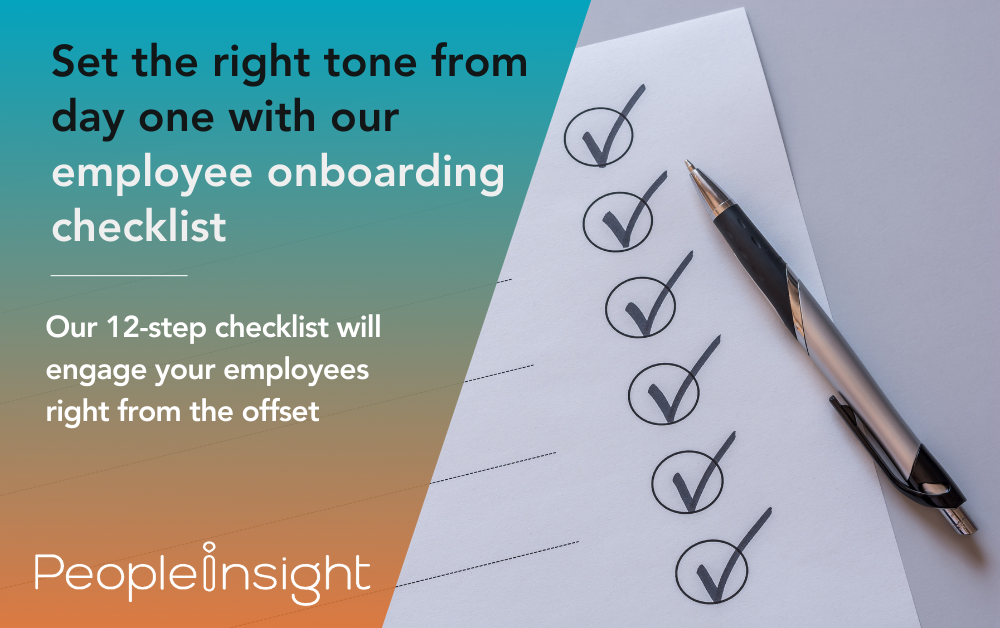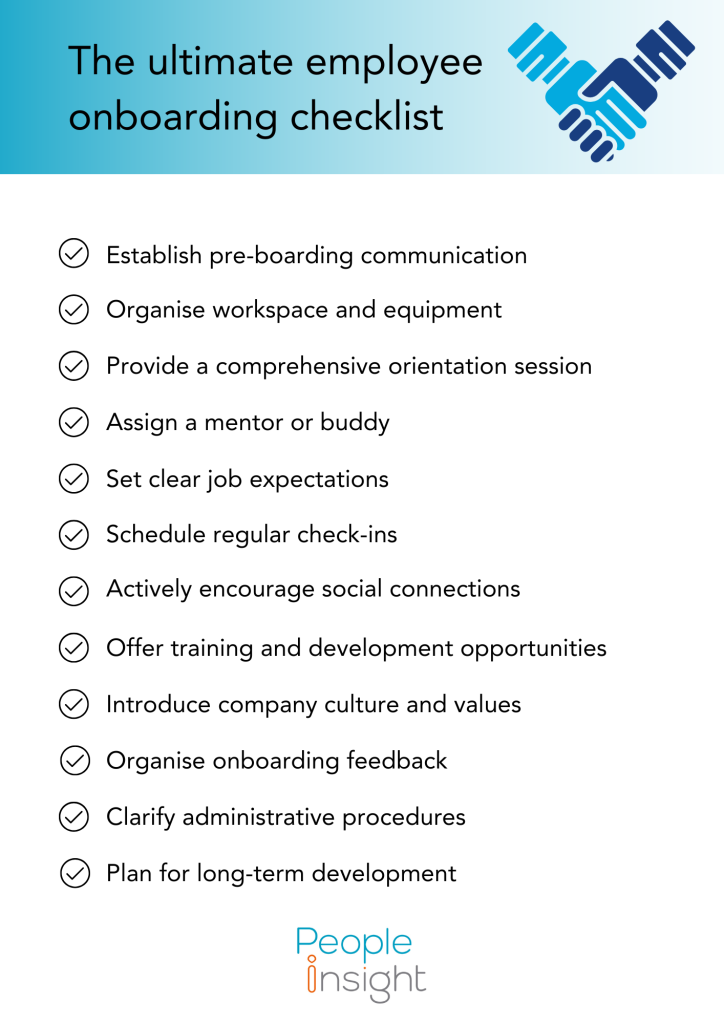
We talk a lot about the employee experience and its importance to happy, motivated, engaged employees. But one thing we don’t discuss enough is the fact that the employee experience actually begins before an employee starts at your company — and setting the right tone in the first few days, weeks and months can make all the difference to how an employee perceives their new place of work. It’s an incredibly important part of the employee lifecycle, influencing every subsequent stage. What’s more, we know that a well-planned onboarding process can improve new hire retention by 82% and productivity by over 70%.
New employees often decide within the first six months whether they will stay with an organisation long-term. A poorly-planned onboarding process can leave them feeling disengaged, while a strategic approach sets them up for success. So how can you ensure you set your employee experience off on the right note?
We’ve put our heads together as experienced employee experience aficionados and HR experts, and we’ve created a comprehensive employee onboarding checklist that will motivate and engage your employees while ensuring alignment with organisational goals. But before we share our checklist, let’s first take a look at the importance of joiners surveys, and how they contribute to the process.
Related: How to promote diversity and inclusion in recruitment
No onboarding process is perfect from the outset. Collecting and analysing onboarding feedback through joiners surveys provides valuable insights into what is working and what needs improvement. When organisations listen to their employees’ experiences, they can refine their employee onboarding checklist, making adjustments that directly enhance the new hire experience.
At People Insight, we specialise in employee listening and gathering actionable insights through surveys, including joiners surveys. By capturing real-time feedback from new employees, businesses can identify patterns, improve engagement and significantly improve staff retention rates.
Implementing a structured employee onboarding checklist helps businesses create a welcoming environment and ensure new employees have all the tools and knowledge they need. Below are 12 key components to consider, as brainstormed by our consultants:

Start engaging employees before their official start date. Send a welcome email with key details such as their start time, dress code, first-week schedule and who they will be meeting. This helps reduce first-day jitters and builds a sense of belonging right from the start.
Make sure all necessary tools, including laptops, access cards, software and office supplies, are ready before the employee arrives. If your employee is working remotely, ensure you send everything out to them in good time. This will give employees peace of mind, a reassurance that the company thrives on efficiency, and will allow them to start their role smoothly.
Think of this as a ‘getting to know you’ session between the company as a whole and your new employee. An orientation session should cover the company’s mission, values, policies and structure. This ensures new employees understand the company’s goals and how their role fits within the organisation, so they feel like an integral, important element from day one.
Pairing a new hire with a long-time employee helps them integrate into the company culture more quickly. This designated person can answer informal questions, offer guidance and provide social support.
This may sound obvious, but it’s such an important stage that it needs to be mentioned — take the time to clearly define job responsibilities, key performance indicators and short- and long-term goals. You should also be clear about how these goals fit into the company’s overall objectives. Misalignment in this area can lead to frustration and disengagement, so transparency is important from day one — encourage employees to speak up if they are unclear about any aspects, no matter how small.
Show your employees they won’t be forgotten after the big first day! Regular check-ins during the first 30, 60 and 90 days allow managers to address any concerns, provide constructive feedback, and ensure the employee is settling in well. These conversations also give new employees an opportunity to voice their experiences and raise any questions. Perhaps most importantly, such conversations allow for a more trusting, transparent relationship to develop between manager and employee — and as we all know, a good relationship in this area has a huge impact on employee engagement in the long term.
Related: How can you improve the employer-employee relationship?
A sense of belonging is key to long-term engagement and happiness. Having a friend at work can make all the difference to the overall wellbeing of an employee.
Introduce new employees to different departments, set up informal coffee chats or arrange team lunches. If you operate remotely, or your employee does, then there are virtual alternatives. You might want to introduce a ‘watercooler’ channel for Teams or Slack, and you could begin to introduce various online quizzes or games to break the ice and encourage connections.
Our 2025 benchmark data shows that only 57% of employees feel their career development aspirations are being met at their current company. This is an area we need to focus on and improve, or employees (especially the ambitious ones!) will inevitably get bored and look for opportunities elsewhere.
Structured training sessions, online courses and job shadowing opportunities help employees gain confidence in their new role, while keeping them excited about progressing with your company. Investing in continuous learning demonstrates a real commitment to their professional development that will pay for itself in the long run.
Beyond a formal orientation, integrate new employees into the company culture by involving them in company-wide initiatives, events and informal traditions. A strong cultural connection leads to higher levels of commitment.
Encourage new hires to share their experiences through joiners surveys. This allows organisations to refine their employee onboarding checklist based on real insights, making improvements that enhance future onboarding processes.
Walk employees through HR-related processes such as payroll setup, benefits enrolment, expense claims and IT support. Clarity in these areas prevents confusion and frustration.
Discuss career pathways and professional development opportunities early on. When employees see a future within the organisation, they are more likely to stay and contribute meaningfully. Try to be as specific and helpful as possible — let employees know about avenues for progression, let them know what would be expected of them if they want to progress, how they can hit those standards and realistic time frames.
The onboarding process sets the tone for an employee’s entire journey within an organisation. A structured employee onboarding checklist helps businesses create a positive first impression, increase engagement and improve retention. But without continuous feedback, even the best onboarding strategies may miss critical insights.
At People Insight, we help businesses listen to their employees through comprehensive employee survey solutions. Our joiners surveys provide valuable insights that allow organisations to refine their onboarding experience, improving engagement and retention in the process.
Get in touch today to learn how our employee lifecycle surveys can help your organisation create an impactful onboarding experience. Contact us to arrange a demo of our survey platform and to see how our experts can help you along the way.
